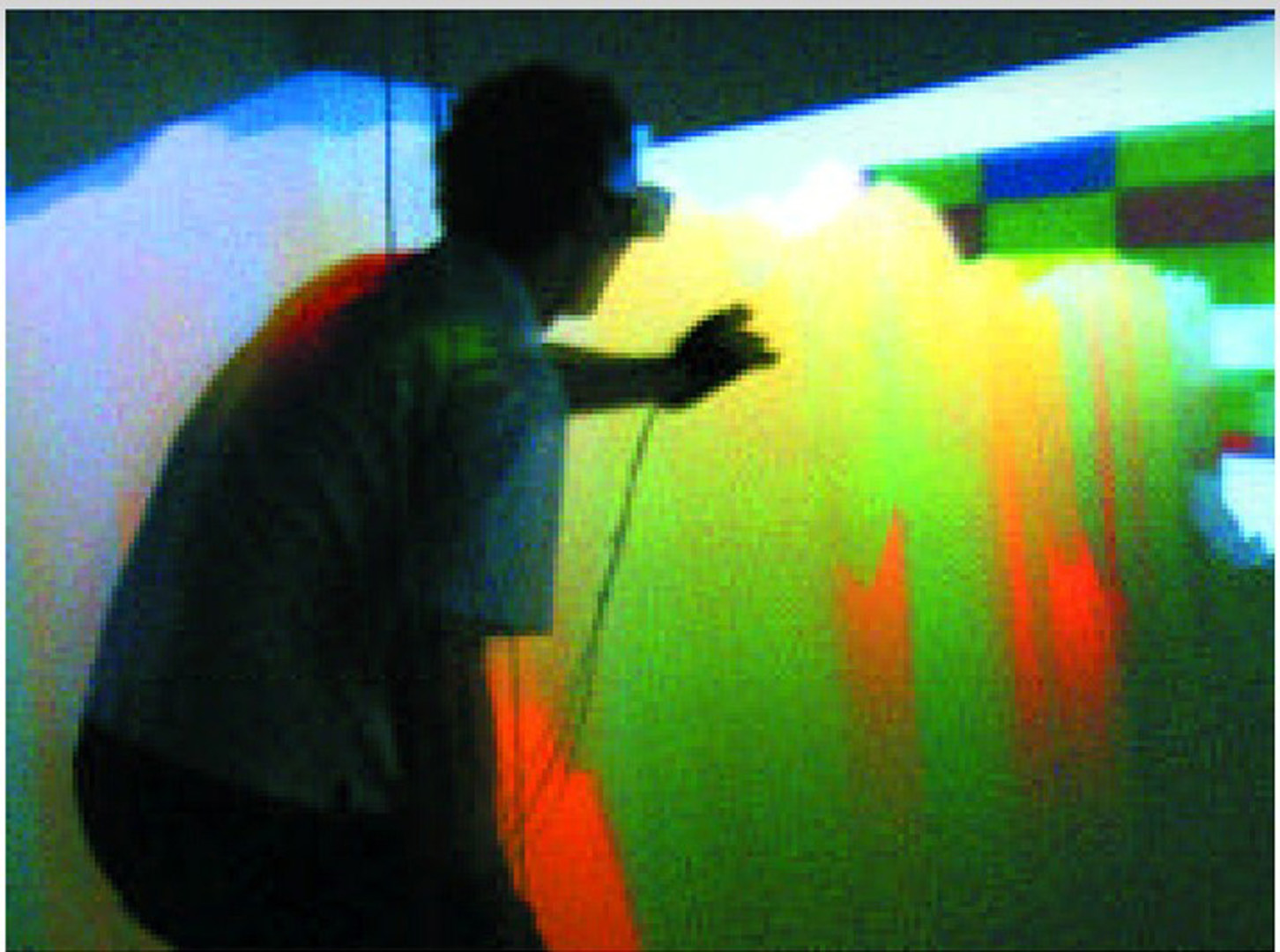“Interaction in an IVR Museum of Color” by Spalter, Stone, Meier, Miller and Simpson
Conference:
Type(s):
Title:
- Interaction in an IVR Museum of Color
Presenter(s)/Author(s):
Abstract:
Immersive Virtual Reality (IVR)1 has exciting potential for educational applications, because it can enable students to interact with ideas in new ways. In an IVR environment, students can engage in simulations of real-world environments that are not accessible due to financial or time constraints (high-end chemistry laboratories, for instance), or which are simply not possible to experience, such as the inside of a volcano or the inside of an atom. IVRs also enable students to interact with visualizations of abstract ideas (for example, mathematical equations and elements of color theory). The hands-on, investigative learning most natural to IVR is an excellent way to train new scientists and engineers. In addition, because the environment is computer-generated, it is an ideal future platform for individual and collaborative distance learning efforts.
IVR lends itself naturally to a constructivist pedagogical approach, one that builds on Piaget’s view that knowledge is created by learners through interaction with people and the world around them 7 and that it is characterized by first-person, non-symbolically mediated interactions. 20 But the success of such virtual “direct experience” depends heavily on the design of interface and interaction techniques. Although IVR may suggest ease of use and obvious, transparent interface designs, the opposite is, unfortunately, true: IVR presents surprisingly difficult interface challenges. Even techniques as seemingly straightforward as object selection and navigation are the subject of dozens of research papers.13,14 The design of IVR interaction that feels natural and promotes learning is an almost entirely unsolved problem. We have been tackling some of the interface and interaction challenges of using IVR for education in a Museum of Color in which students can perform a number of science museum-like experiments.
Although IVR environments are still too expensive and fragile for mainstream educational use, the use of VR in training is well-established,10 and its use in entertainment is growing rapidly.21,1 Moore’s Law is seen in the use of commodity 3D graphics in games and edutainment (the Sony Playstation 2 has more graphics power than most of today’s high-end workstations), and suggests that today’s esoteric immersive environments will become commodity classroom fixtures in the future. We feel, therefore, that it is critical to conduct educational IVR interface and interaction research today so that educators can take full advantage of IVRs in the near- and long-term future.
Acknowledgements:
Our thanks to Andy van Dam for his critical reading and to David Karelitz and Jean Laleuf for feedback during the creation of the Museum. We would like to thank Adobe Systems, Inc. for their generous support of this work. We would also like to thank the other sponsors of the Brown University Computer Graphics Group and the CAVE at Brown: Advanced Network & Services, the Technology Center for Advanced Scientific Computing and Visualization, the Department of Energy, IBM, Intel, Microsoft, the NSF Science and Technology Center for Computer Graphics and Scientific Visualization, and Taco, Inc.






